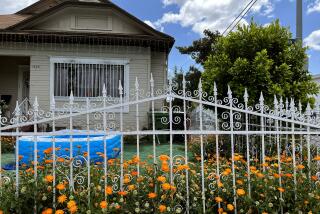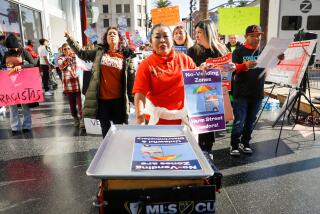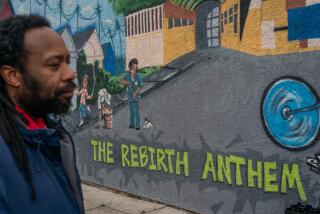Anti-Drug Barricades Taken Off the Streets : Closure: A 12-block area of a Sepulveda neighborhood is reopened. Police and residents agree that dealing declined during the eight-week period.
- Share via
Barricades installed temporarily across streets in a Sepulveda neighborhood two months ago to keep drug dealers out have been removed, with Los Angeles police saying the effort has been a success--so far.
The sawhorse barriers were removed Monday from the neighborhood bounded by Orion Avenue, Nordhoff Street, Langdon Avenue and Parthenia Street.
On Jan. 18, the 12-block area was closed off except for one entrance, on Rayen Street, in an effort to halt drive-through drug sales. Twice a day, barriers on other streets were removed by police for buses from Langdon Avenue Elementary School.
The street closures followed by three months the permanent barricading of a similar-sized neighborhood along nearby Columbus Avenue.
Capt. Jim Whitley said Wednesday that the Orion neighborhood barricade was planned only as a temporary measure because problems there were not as severe as in the Columbus neighborhood. In fact, police said, some of the Orion area’s problems were caused by drug dealers driven out of the Columbus neighborhood.
But eight weeks after the sawhorses were erected in the Orion area, the drug activity has receded, police and residents agreed. Although statistics were unavailable, Whitley estimated that drug dealing in the neighborhood has dropped by 75% and other crime by 30%.
The Orion neighborhood will be closely monitored, Whitley added, as police and residents wait to see if the change will last.
“That’s the plan,” Whitley said. “We will use our traditional police methods to watch the place. If the problems come back, we will bring back the barricades.”
Those who live or work in the area mostly had a wait-and-see attitude toward the removal of the barricades.
“When the barricades were up it was beautiful here,” said Nick Notarangelo, a resident manager of an apartment building. “Now I don’t know what will happen. We’ll have to see.”
Dan Balderrama, principal of Langdon Elementary School, said he had watched drug dealers operate openly on the streets outside the school, but the barricades eliminated the problem.
“Drug trafficking definitely dropped way down,” Balderrama said. “I think there is still some going on, but I don’t think I have seen any open dealing. The visibility of it is gone.”
Balderrama said, however, that although the barricades kept drug dealers out, they allowed gang members to congregate more freely. The principal said the barriers limited police patrol cars access to the one entrance at Rayen Street. Gangs could post a lookout near that entry while others congregated on the traffic-free streets inside the barricaded neighborhood.
“The gangs were really getting very open,” Balderrama said. “They were very cocky, hanging around the school. They only had to watch one street for the police. So I feel pretty good about the barricades coming down.”
Whitley replied, however, that the gang problem was not related to the barricades. He said gang members live in an apartment building near the school, and would have congregated there “whether we had barricades or not. We are working on correcting it.”
The use of barricades is an untraditional law enforcement method that Los Angeles police began to use sparingly in areas of the city last year. Whitley said the Columbus neighborhood was targeted for permanent barricades because its problems were extreme.
“Columbus had a Valley-wide and, to some degree, a city-wide reputation as a place where people can buy drugs,” Whitley said. “So we have a long-term plan there.”
Whitley said apartment owners and local businesses have raised nearly $6,000 to pay for permanent barriers with gates for firetrucks. Police report that drug dealing and other crime have dropped sharply since the barricades went up there, too.
More to Read
Sign up for Essential California
The most important California stories and recommendations in your inbox every morning.
You may occasionally receive promotional content from the Los Angeles Times.










